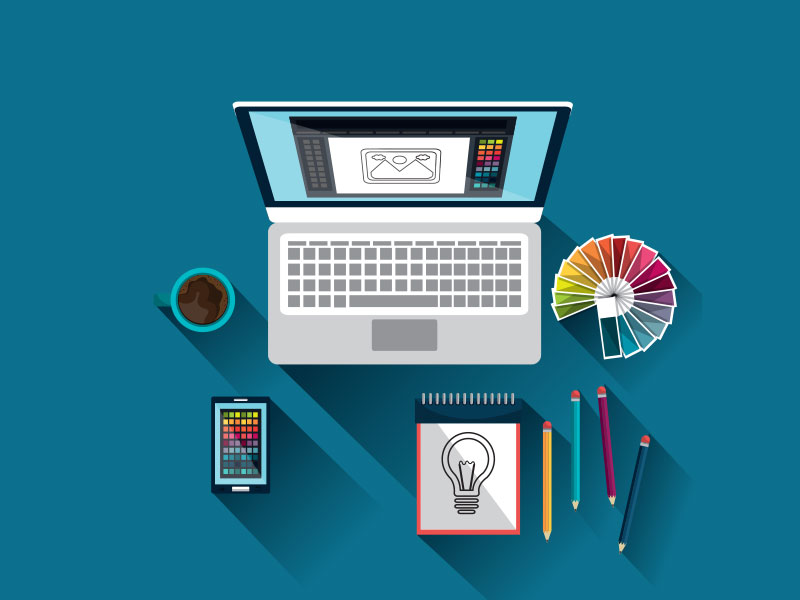- By Coursera Staff
- 28 Aug 2022
How to Learn Graphic Design: 7 Steps to Build Your Skills
Introduction to Graphic Design
- Graphic design is a versatile and essential skill for various fields, from brand marketing to government agencies.
- It involves visual communication to convey messages effectively, making it valuable for roles ranging from designing logos to creating infographics.
Steps to Learn Graphic Design
-
Learn the Basics
- Understanding design principles is crucial for any aspiring graphic designer.
- Key concepts include:
- Color Theory: The study of colors and their impact on design and human perception.
- Typography: The art of arranging type to make written language legible and appealing.
- Hierarchy: The arrangement of elements to show their order of importance.
- Composition: The placement or arrangement of visual elements in a design.
- Shapes and Layout: Using geometric forms and spatial arrangement to create balanced and effective designs.
-
Build Skills with Online Courses
- Leverage the abundance of online resources to enhance your design skills.
- Suggested courses and programs include:
- CalArts' Graphic Design Specialization: Offers a comprehensive introduction to graphic design principles and applications.
- UC Boulder’s Graphic Design: Provides a deep dive into color theory, image formats, and basic design concepts.
- University of Tokyo’s Interactive Computer Graphics: Focuses on computer graphics, interactive media, and digital design.
- Engage in short, guided projects to quickly build specific skills, such as creating logos or social media posts using tools like Canva.
-
Master Design Programs
- Proficiency in graphic design software is essential. The top programs include:
- Adobe Illustrator: A vector graphics editor used for creating logos, illustrations, and complex graphic designs.
- Adobe Photoshop: A raster graphics editor perfect for photo editing, digital painting, and graphic design.
- Adobe InDesign: A desktop publishing software used for creating layouts for print and digital media.
- Beginners may find Canva useful for simpler design tasks and understanding current design trends.
- Proficiency in graphic design software is essential. The top programs include:
-
Create a Portfolio
- A compelling portfolio is critical for showcasing your skills and attracting potential employers.
- Tips for an impressive portfolio:
- Showcase Your Best Work: Include only your top designs to make a strong impression.
- Express Your Personality: Let your unique style and creativity shine through your designs.
- Document Impact: Provide evidence of your designs' effectiveness, such as metrics showing increased brand awareness or engagement.
- Consider undertaking personal projects to fill gaps in your portfolio and demonstrate a range of skills.
-
Grow Your Network
- Networking is vital for career growth. Engage with fellow designers at events, join design communities, and connect with industry professionals on LinkedIn.
- Building a personal brand on social media platforms like Instagram or Pinterest can help showcase your style and attract job opportunities.
- Consider focusing on a niche industry, such as non-profits or branding agencies, to build a specialized network.
-
Get Work Experience
- Gaining practical experience can be challenging initially, but internships, volunteer work, or freelance gigs can help.
- Platforms like Fiverr offer opportunities for freelance projects, providing a low-stakes way to build your portfolio.
- Networking can also lead to contract or freelance work, helping you gain valuable experience and expand your skill set.
-
Continue Learning and Growing
- Stay updated with new design tools and trends to remain competitive in the field.
- Take additional courses to specialize in areas such as motion graphics or user interface (UI) design.
- Embrace continuous learning and adaptability to advance your career and stay relevant.
Top 3 Graphic Design Programs
-
Adobe Illustrator
- Usage: Creating vector graphics, logos, icons, and illustrations.
- Features: Precision drawing tools, advanced color manipulation, and comprehensive typography options.
- Benefits: Ideal for creating scalable graphics that retain quality at any size.
-
Adobe Photoshop
- Usage: Photo editing, digital painting, and creating detailed graphics.
- Features: Advanced photo manipulation tools, layers and masks, extensive filters and effects.
- Benefits: Versatile software suitable for both beginners and professional designers.
-
Adobe InDesign
- Usage: Layout design for print and digital media, such as magazines, brochures, and eBooks.
- Features: Professional typesetting tools, support for complex layouts, integration with other Adobe tools.
- Benefits: Essential for producing high-quality, print-ready designs and digital publications.
Conclusion
Graphic design offers flexible work opportunities, including remote and freelance options. By mastering the basics, leveraging online resources, and continuously learning, you can build a successful career in graphic design. Networking and practical experience are crucial for growth, while proficiency in top design programs like Adobe Illustrator, Photoshop, and InDesign will set you apart in the industry.

